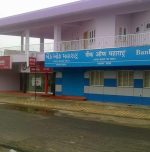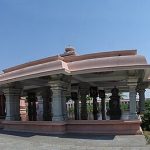Raj Samadhiyala, a model village with no political campaigns

Raj Samadhiyala, a village located 20km from Rajkot in Gujarat, stands as a beacon of community-driven governance and high electoral participation setting a unique example for its neighbouring regions.
This village is governed by a powerful village development committee led by sarpanch Hardev Singh. It has approximately 1,050 residents.
The village maintains a strict no-political-party policy, which has been in place since the 1980s.
This initiative, originating from the idea of reducing political noise and focusing on community consensus, has led to an impressive voting turnout of around 95%.
To ensure this high participation, the village imposes a fine of ₹51 on residents who fail to vote, unless they present a valid excuse such as a medical emergency to the committee.
In Raj Samadhiyala, even the election of the sarpanch is a consensus-driven process without typical political campaigning.
The residents, primarily farmers growing groundnut and cotton, support this system, valuing local governance over political promises.
The village development committee plays a crucial role. It represents various community interests and makes collective decisions that have helped maintain an astonishing 96% voting record. The voting includes both legislative and parliamentary polls.
The village boasts modern amenities like Wi-Fi, CCTV surveillance, and an RO plant ensuring clean drinking water due to the effective utilization of grants and panchayat funds.
Moreover, Raj Samadhiyala this village has many advanced features that many developed cities still lack. It is known for its concrete roads, cleanliness, and community facilities like clean public toilets and a cricket stadium.
In addition to electoral fines, the village also penalizes residents ₹500 for bypassing local dispute resolution systems like the Lok Adalat or engaging in superstitious practices.
This approach not only fosters community harmony but also reinforces local governance.
Inspired by the Rajsamadhiyala example, ten nearby villages have adopted similar policies, collectively covering a population of 5,000 to 6,000 people. They also have banned political parties and campaigning.
This model of governance and community engagement highlights a shift towards more sustainable and self-reliant rural development, sparking interest in local governance models free from conventional political influences.
Image Credit: Antur, CC BY-SA 3.0, via Wikimedia Commons
Image Reference: https://commons.wikimedia.org/wiki/File:Gujarat_Rajkot_district.png










Leave a Reply